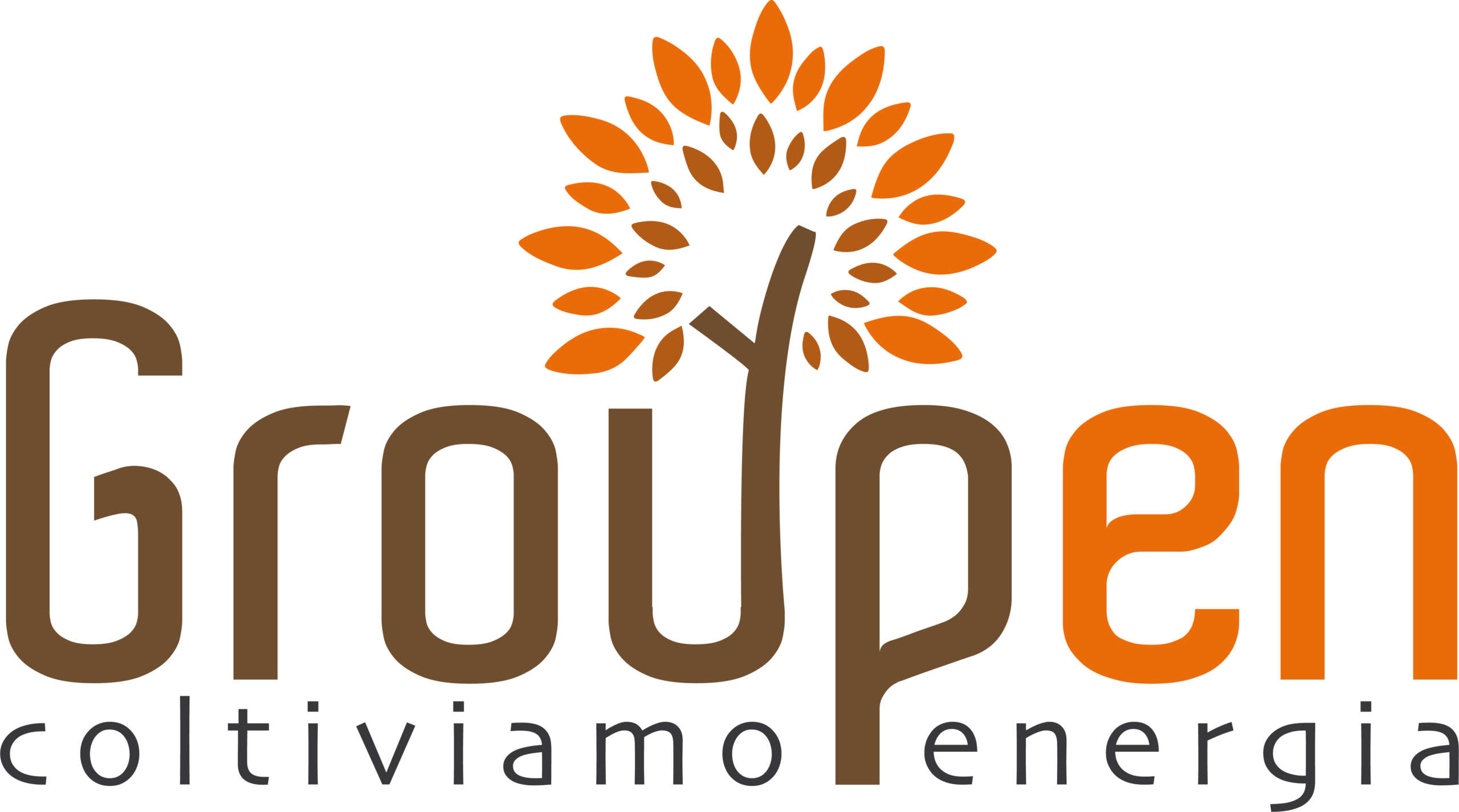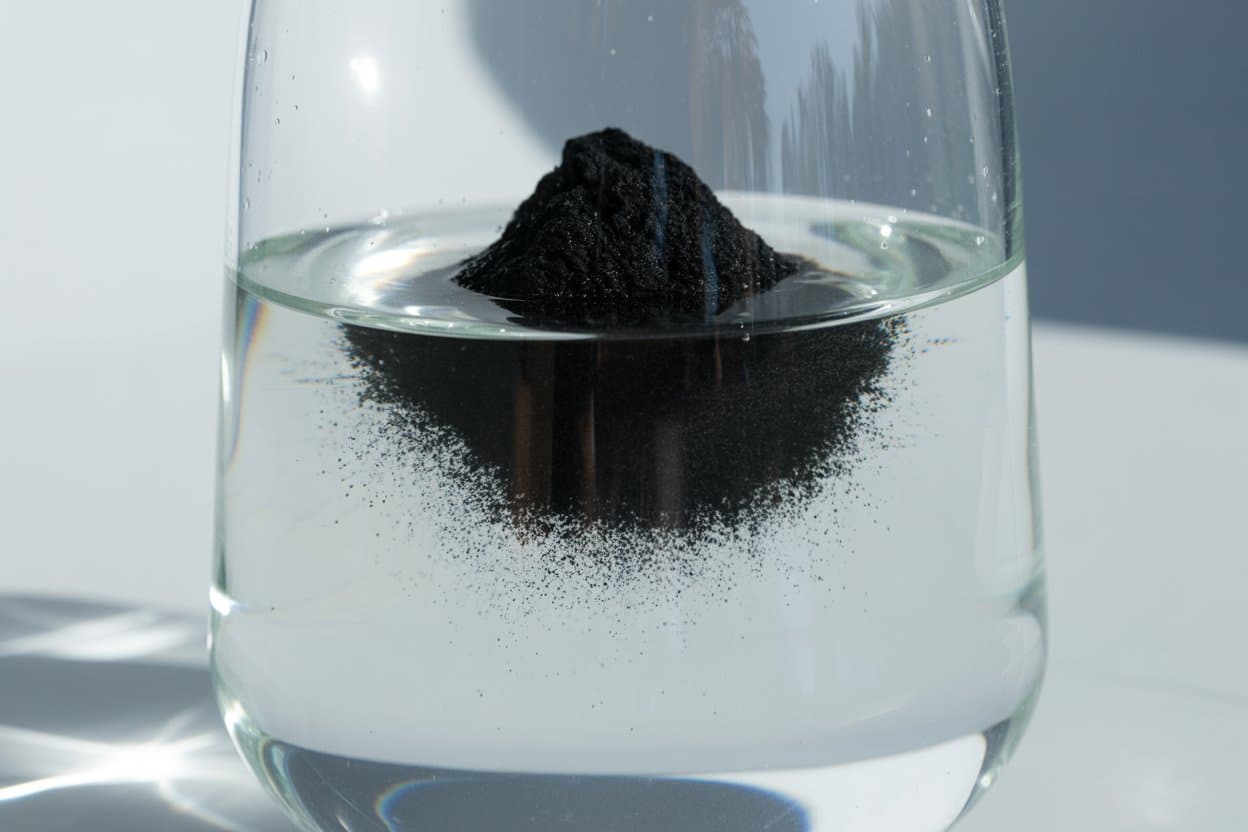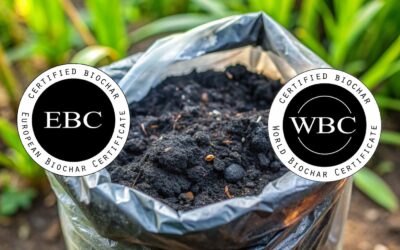Environmental pollution, fueled by decades of industrialization, urbanization, and intensive agricultural practices, represents one of the most pressing challenges of our time. Heavy metals, pesticides, antibiotics, and other toxic compounds contaminate our water and soil.
While advanced treatment methods exist, they are often “energy-intensive, expensive, and release toxic secondary by-products.”
In this scenario, a promising, economical, and sustainable solution emerges: nano-biochar (nano-BC) . This carbonaceous material, derived from biomass and reduced to nanometer dimensions, possesses exceptional physicochemical characteristics that make it an ideal candidate for addressing large-scale pollution.
What is Nano-Biochar and how is it different from Traditional Biochar?
Nano-biochar is an advanced form of biochar. While traditional biochar (or macro-biochar) is already known for its beneficial properties, its nanoscale version greatly amplifies its potential. Its superior characteristics include:
- Greater stability and unique nanostructure
- Greater catalytic capacity
- High specific surface area and porosity
- Better functionality and more surface active sites
These properties make it not only more efficient, but a real “long-term, cost-effective and sustainable solution to environmental pollution” (Bhandari et al., 2023).
How is Nano-Biochar Produced?
Nanobiochar production typically occurs through “green” and energy-saving nanotechnology methods, using raw materials such as agricultural waste (rice husks, peanut shells), animal waste, and municipal waste. The process involves two main phases.
Phase 1: Preparation of Bulk Biochar (Macro-BC)
The biomass is decomposed through thermochemical processes, such as pyrolysis , at temperatures between 350-700°C in the absence of oxygen. Slow pyrolysis is an environmentally friendly method that guarantees high product yields.
Phase 2: Nanoscale Reduction
Since direct synthesis produces very low yields (<2.0%), the macro-biochar is reduced in size through two main approaches:
- Top-Down Methods: These involve “crushing” the material. Ball milling is one of the most popular methods due to its low cost, reduced energy consumption, and its effectiveness in improving surface area and absorption capacity. Other methods include shearing and centrifugation.
- Bottom-Up Methods: Assemble nanomaterials from the atomic level. Sonication , for example, uses shock waves to increase microporosity and “exfoliate the carbon backbone.”
Functionalization: Enhancing the Performance of Nano-BC
To further improve its performance, nano-BC can be “functionalized.” Processes such as oxidation or engineering with iron oxide (Fe3O4) nanoparticles increase the adsorption sites and the versatility of the material.
The Extraordinary Properties of Nano-Biochar
The properties of nano-BC determine its effectiveness. Depending on the raw material and manufacturing process, its characteristics vary:
- Biomass Origin: Nano-BC derived from plants has a high affinity for organic pollutants and heavy metals. The one from municipal waste is effective in removing heavy metals through complexation.
- Pyrolysis Temperature: Higher temperatures increase the specific surface area, a key factor for adsorption.
- Zeta Potential: A high zeta potential indicates greater stability and dispersibility in water, preventing particle agglomeration and maximizing contact with pollutants.
Applications of Nano-Biochar in Environmental Remediation
Nano-biochar is a multifunctional technology with applications ranging from carbon sequestration to the treatment of emerging contaminants.
1. Nano-Biochar as a Super-Effective Adsorbent
Nano-BC has an “exceptional adsorption capacity” for a wide range of pollutants. Its effectiveness is due to its high surface area, porosity, and surface charge.
- Mechanisms: Adsorption occurs through chemical interactions (chemosorption), physical interactions (physiosorption), precipitation and ion exchange.
- Pollutants Removed:
- Inorganic Compounds: Heavy metals such as Chromium (Cr), Cadmium (Cd), Nickel (Ni), Copper (Cu), and Lead (Pb). Studies have shown a removal of “>98.8% of Cr and Cd . ”
- Organic compounds: Antibiotics (tetracycline), drugs, phthalates, and volatile organic compounds (VOCs) such as toluene.
2. Support for Enzymes and Biocatalysts
Thanks to its “high mobility and tunable surface chemistry,” nano-BC is an excellent vector for immobilizing enzymes and microbes. This allows for continuous and more stable degradation of contaminants. For example, laccases immobilized on magnetic nano-BC showed “complete elimination of bisphenol A (BPA) within 75 minutes ,” maintaining 85% efficacy after 7 reuse cycles.
3. Photocatalyst for the Decomposition of Pollutants
Nano-BC acts as an ideal support for photocatalysts (e.g., ZnO), improving their efficiency in degrading aquatic pollutants. It reduces the recombination of electrical charges (e−/h+), enhancing the catalytic reaction. A nano-BC/ZnO composite achieved a 95% photodegradation rate of the target contaminant.
4. Electrode for Electrochemical Biosensors
The electrochemical properties of nano-BC make it a promising alternative for the creation of ultrasensitive biosensors. Its adsorption capacity allows it to selectively capture chemicals, improving the detection of heavy metals, nitrites, and organic compounds. A biosensor for the toxin microcystin-LR showed a response time of only 5 minutes and a very low detection limit (17 pM).
Challenges, Concerns and Future Prospects
Despite its enormous advantages, large-scale adoption of nano-biochar presents some challenges:
- Low Yield and Stability: Production still has limited yields and the material can clump or disperse uncontrollably.
- Large-Scale Production: There is a lack of established technologies for cost-effective, large-scale manufacturing.
- Ecotoxicity: Its high mobility could lead to cross-contamination between ecosystems. In-depth studies are needed to assess its toxicological impact on plants, animals, and microorganisms and ensure its environmental safety.
Conclusion: The Future is Nano and Sustainable
Nano-biochar represents an emerging and potential alternative to carbon-based nanomaterials, far surpassing traditional biochar. Its effectiveness in removing pollutants and its versatility as a support for catalysts and sensors place it at the center of research for a more sustainable future.
However, to move from laboratory scale to commercial scale, it is essential to optimize production processes, increase yields, and thoroughly study its behavior and impact on ecosystems to “limit any harmful effects.” The path is clear, and nano-biochar has all the credentials to become a key player.
FAQ about Nano-Biochar
How is nano-biochar used in electrochemical biosensors?
Nano-biochar (nano-BC) is a promising alternative to carbon electrodes in electrochemical biosensors due to its high electrical conductivity, large surface area, and tunable surface functionality . Its ability to selectively adsorb chemical compounds increases the concentration of analytes on the electrode, significantly improving sensitivity. It has been successfully used to create voltammetric sensors for heavy metals (Pb, Cd), organic compounds (bisphenol A), and aquatic pollutants (nitrite, sulfite), demonstrating stability and reusability.
What are the main applications of nano-biochar in environmental remediation?
Key applications include:
- Adsorbent: To remove heavy metals, pesticides, drugs and organic compounds from water and soil.
- Immobilization Material: As a support for enzymes and biocatalysts, improving their stability and efficiency in the degradation of contaminants.
- Photocatalyst: As a support to increase the efficiency of photocatalysts in the breakdown of aquatic pollutants.
- Biosensor Electrode: To create highly sensitive electrochemical sensors for contaminant monitoring.
It also contributes to carbon sequestration and soil health.
What factors influence the performance of nano-biochar?
Performance is affected by:
- Synthesis Method: Methods such as ball milling or sonication determine surface area, purity and stability.
- Properties of Nano-BC: The pyrolysis temperature, the raw material used and the surface functionality are crucial.
- Pollutant Characteristics: The chemical nature (polarity, molecular weight, valence) of the contaminant determines the removal efficiency.
- Environmental Factors: pH, the presence of microbes and other substances in the environment (soil, water) can alter the adsorption capacity.
What are the challenges and environmental concerns associated with the use of nano-biochar?
The main challenges are:
- Low Yield and Stability: Production is still limited and nanoparticles may clump together.
- Scalability and Cost: Technologies for cost-effective large-scale production are lacking.
- Ecotoxicity and Safety: Its high mobility raises concerns about the risk of cross-contamination between ecosystems. In-depth studies are needed to assess its toxic impact on plants, animals, and human health before commercial adoption.
- Incomplete Understanding: It is necessary to further investigate the molecular mechanisms of interaction with pollutants.







